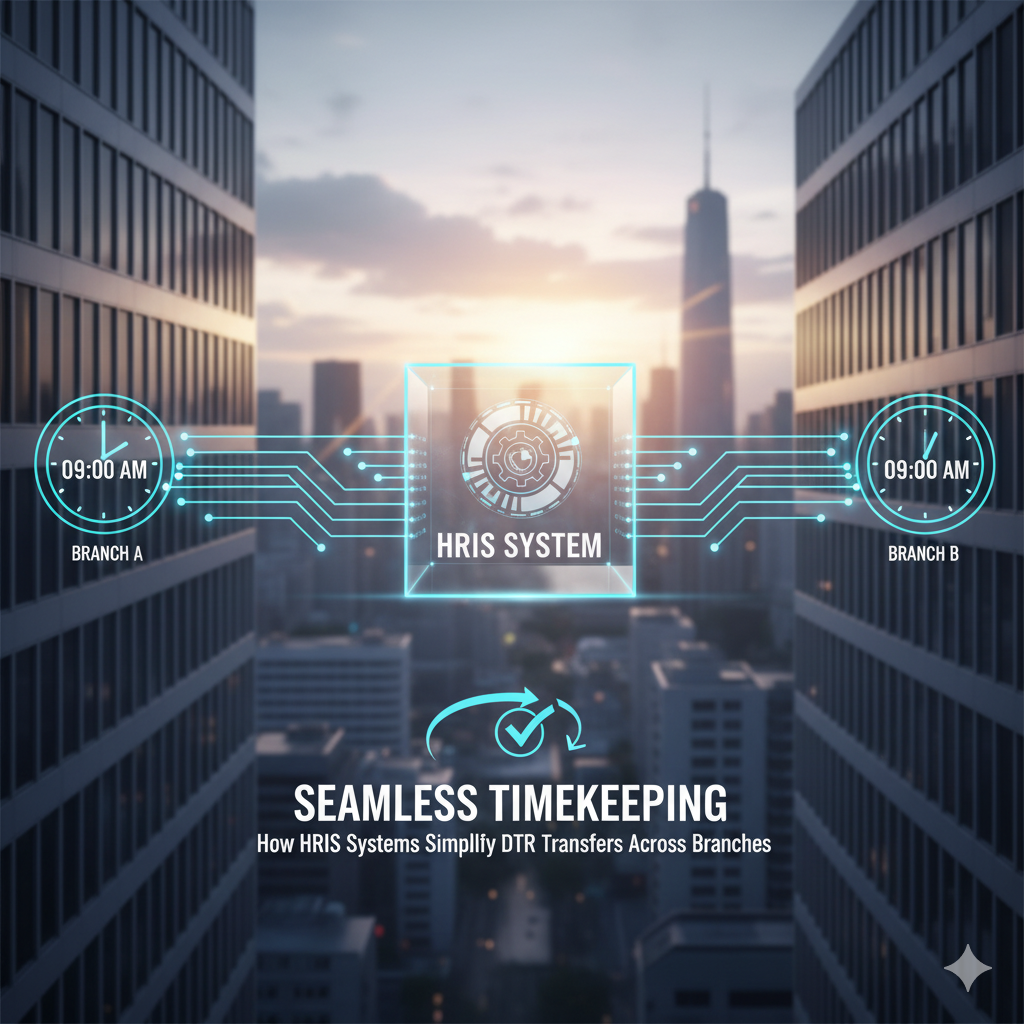Address
Kaypian, San Jose Del Monte City, Bulacan Philippines
Work Hours
Monday to Friday: 8AM - 6PM
Weekend: 10AM - 5PM
Address
Kaypian, San Jose Del Monte City, Bulacan Philippines
Work Hours
Monday to Friday: 8AM - 6PM
Weekend: 10AM - 5PM


Integrated HR. Accurate Payroll.


Integrated HR. Accurate Payroll.

Managing attendance across multiple branches can be a challenge for any growing organization. When each location tracks employee time separately, consolidating Daily Time Records (DTRs) often turns into a tedious, error-prone process.
That’s where an HRIS (Human Resource Information System) comes in — transforming complex timekeeping into a centralized, automated, and transparent system.
In this article, we’ll explore how HRIS solutions make multi-branch DTR transfer seamless, reduce manual work, and improve workforce management efficiency.
For businesses with multiple locations — whether retail stores, manufacturing sites, or satellite offices — timekeeping often means juggling different attendance systems and formats.
Common issues include:
These problems don’t just waste time — they can also lead to inaccurate payroll, compliance risks, and employee dissatisfaction.
An integrated HRIS system centralizes all attendance data into one unified platform. Instead of manually exporting and importing DTR files from each branch, the system automatically syncs timekeeping records in real time.
Here’s how it works:
🕒 Automated Data Sync: Branch timekeeping terminals upload DTR logs directly to the HRIS database.
🌐 Cloud-Based Integration: Data from multiple locations is stored securely and instantly accessible to HR teams anywhere.
⚙️ Standardized Format: All branches follow the same data structure, eliminating formatting issues.
🔁 Real-Time Updates: Any time correction or adjustment made in one branch immediately reflects in the central system.
This results in accurate, up-to-date attendance data for all employees — no matter where they clock in.
Implementing DTR transfer automation within your HRIS provides tangible benefits:
✅ 1. Time and Cost Efficiency
No more waiting for HR staff in each branch to send reports. Automation cuts down manual work and frees up HR teams to focus on more strategic tasks.
✅ 2. Payroll Accuracy
Consolidated and validated DTRs mean payroll runs smoothly and accurately — ensuring employees are paid correctly and on time.
✅ 3. Real-Time Oversight
Managers and HR admins can monitor attendance patterns, absences, and overtime data from all branches in real time.
✅ 4. Reduced Human Error
Automating data transfers removes manual encoding mistakes and prevents duplicate records.
✅ 5. Improved Compliance
Accurate time records across locations help maintain labor law compliance and provide reliable audit trails.
Modern HRIS platforms include data encryption, role-based access controls, and automatic backups to safeguard sensitive employee information.
Only authorized users can view or modify timekeeping data, ensuring that your DTR transfers remain both accurate and secure.
Imagine a retail company with 10 branches. Each branch uses biometric scanners to log attendance. Without HRIS integration, HR staff must export logs from every device and manually upload them to the main office.
With an HRIS timekeeping module, all branch scanners automatically sync with the central system via the internet. The HR team can instantly generate consolidated attendance reports — no spreadsheets, no emails, no delays.
In today’s hybrid and distributed work environments, real-time attendance visibility is critical. Businesses that adopt centralized HRIS timekeeping gain:
Efficient timekeeping isn’t just about tracking hours — it’s about creating a connected workforce.
By automating DTR transfers across branches, an HRIS system ensures every employee’s time is captured accurately, every payroll run is stress-free, and every branch operates in sync.
If your organization still relies on manual DTR uploads or branch-specific attendance files, now’s the perfect time to upgrade to a centralized HRIS timekeeping system — and experience truly seamless workforce management.